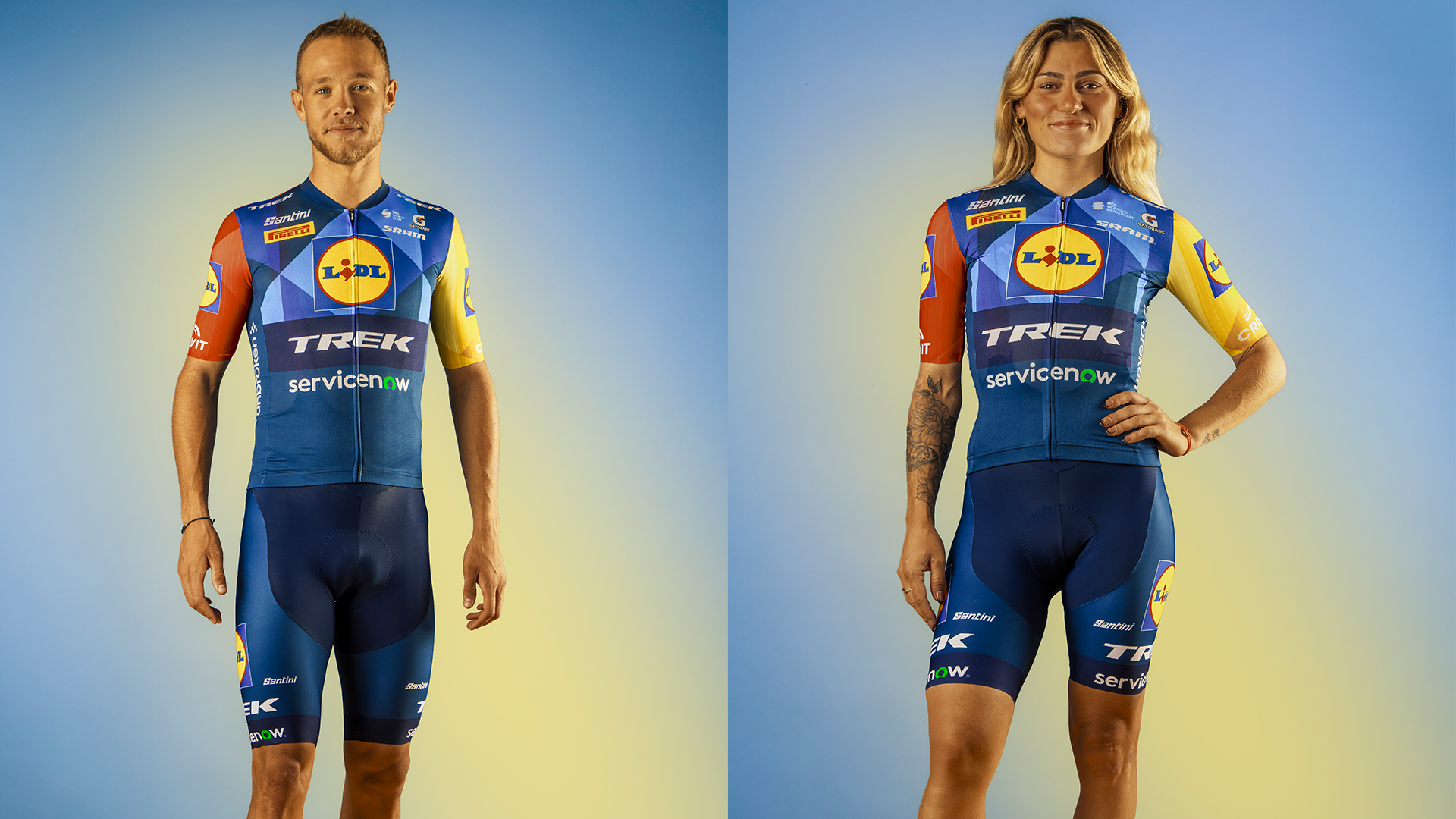Continental road bike tyres 2021 - a comprehensive range overview
Continental road bike tyres have long been the default choice for performance road cyclists, here's everything you need to know
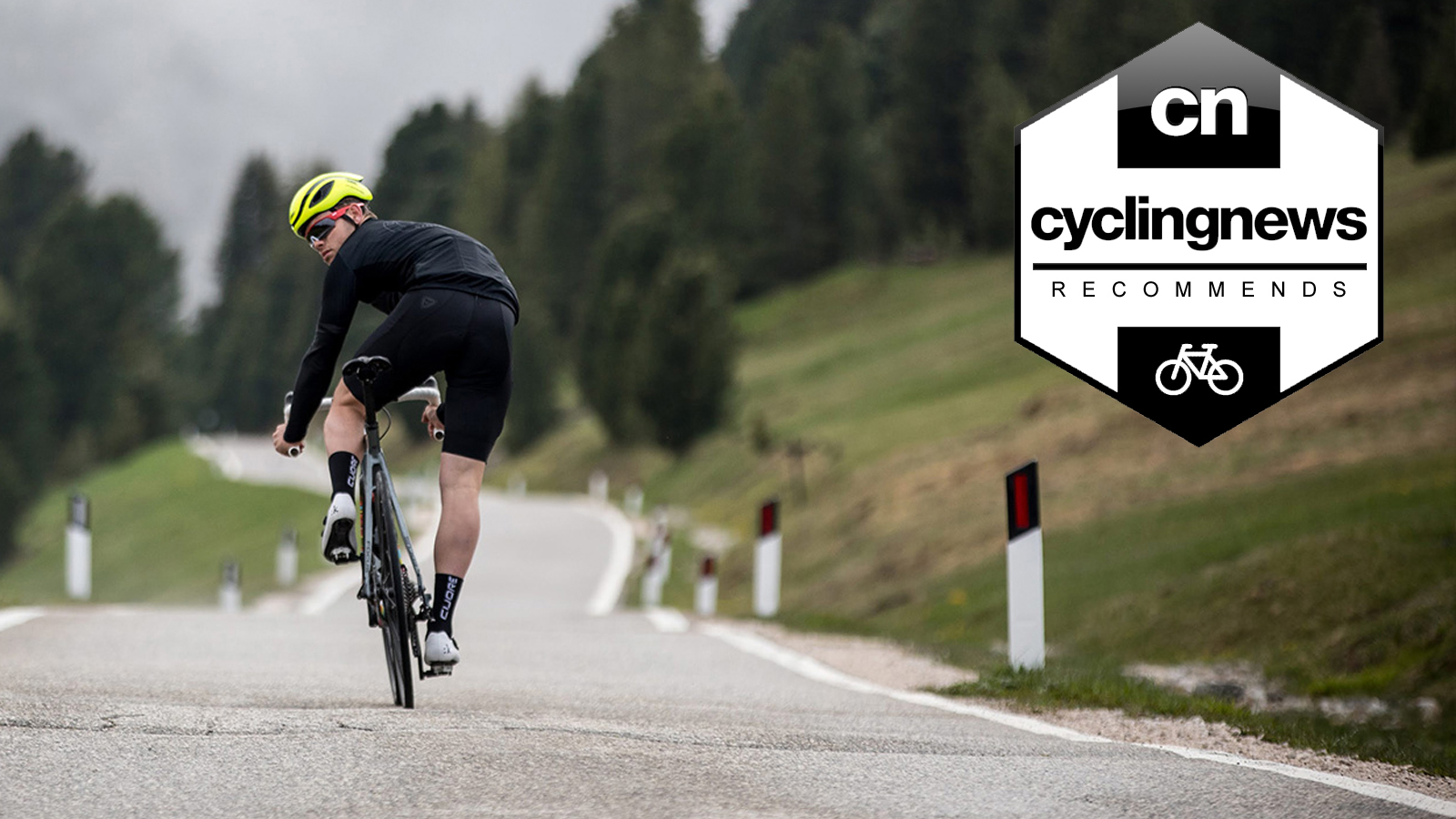
We’ve been using Continental road bike tyres for decades and its new gravel bike tyres since they came out. So how do the drop-bar tyres from the German brand compare to the best of the rest?
Continental road bike tyres are a staple in many road cyclist's tyre choice, while its Grand Prix tyres have been our default wheel and bike test tyre for as long as we can remember. Together with other classics like the Gatorskin, they’re a benchmark favourite for a huge amount of regular riders, too. The GP 5000 finally introduced tubeless technology to Continental’s road range and the Cross Speed and Cross Trail have filled the gravel hole in the German brand’s range.
While tubeless and gravel have been an obvious hole in the Continental range, the German firm has been making bike tyres since the 1890s. It tends to keep making proven tyres even if they’ve been superseded by more evolved designs so there's a huge range of regular road tyres to choose from. Continental has developed a whole range of proprietary technologies for tread and casings in its Korbach factory too, which we’ve gone into the details of here.
But having ridden them all over the years, which tyres are the best for the riding you do and how do they compare to other options from Continental and competing brands?
Skip to: Continental road tyres: technology explained
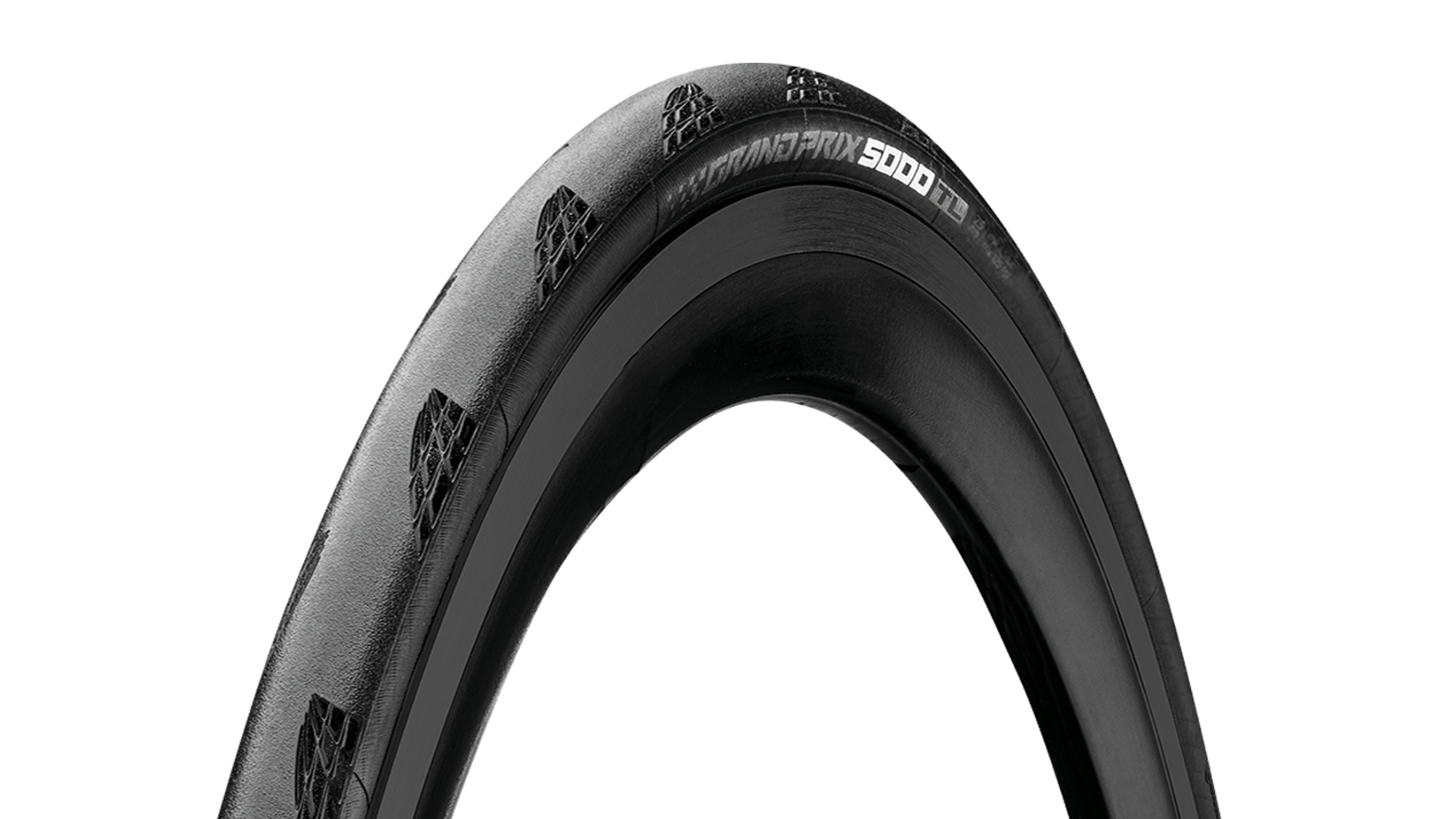
Specifications
Reasons to buy
Reasons to avoid
The latest in the Grand Prix series takes what was already a benchmark performer to a whole new level, particularly in Continental’s first entry into tubeless road tyres which are 12% faster and 20% more puncture resistant than GP 4000 II according to its own figures. We reviewed the GP5000 and basically, it’s blisteringly fast whether tested on laboratory rollers or the road. The elastomer Active Comfort layer means it still feels super smooth and damped though and speed is excellent over rough surfaces particularly in the super-fat 32mm version. The BlackChili compound hooks up consistently in all conditions and it gets Vectran protection and a decent tread depth. That means it’s a proper daily driver tyre despite being as fast as most time trial specials. They are heavy though so acceleration is a little slower and they’re a real fight to get onto some rims.
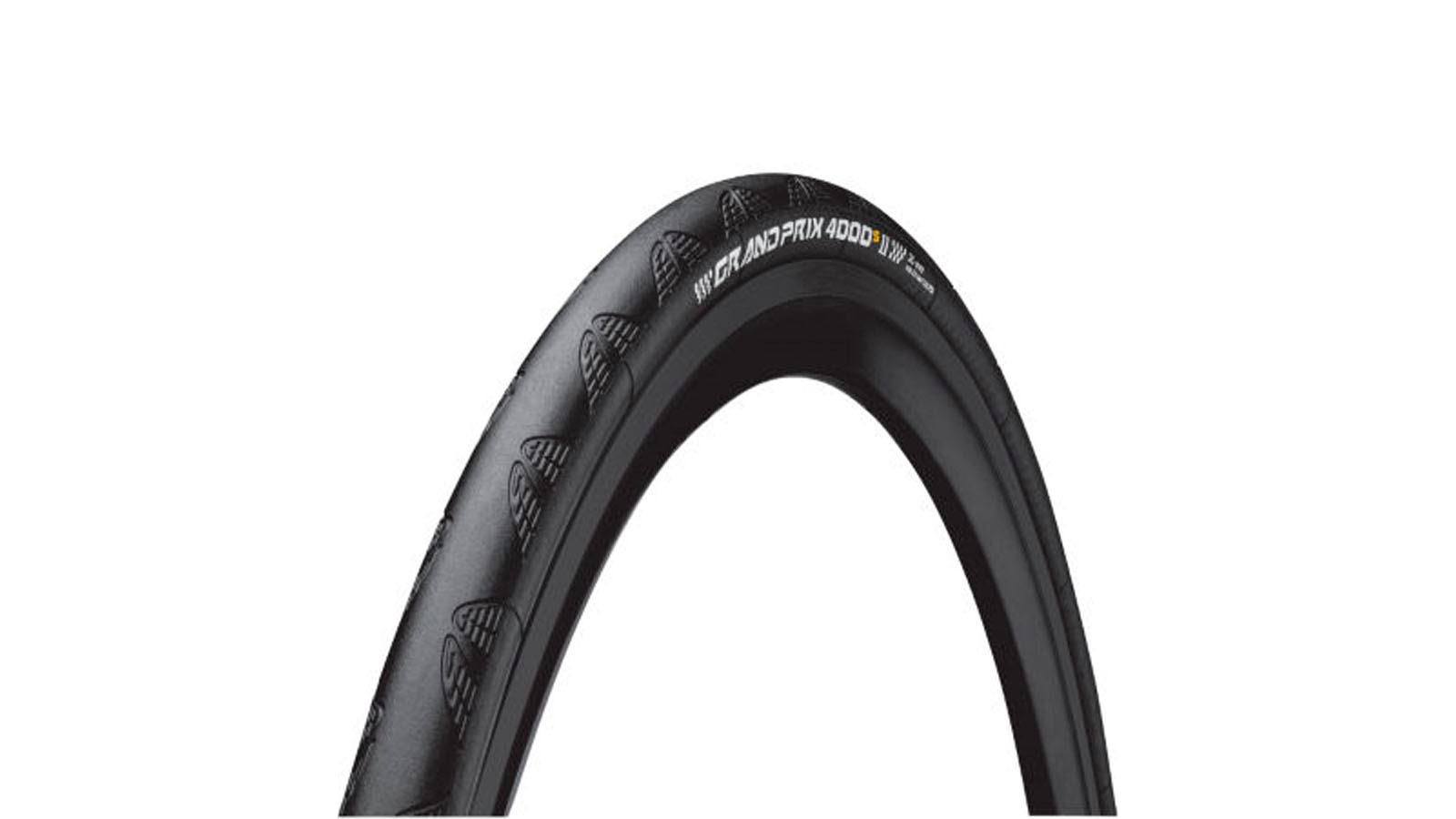
Grand Prix 4000S II
Specifications
Reasons to buy
Reasons to avoid
Continental’s repeatedly evolving flagship tyre for over twenty years and our default test tyre, the 4000 has now been superseded by the 5000 for ultimate performance. It’s still competitive with most of the opposition in terms of rolling speed, ride feel and puncture proofed durability thanks to BlackChili rubber and Vectran protection. It’s £10 cheaper than the 5000 too and available in more small sizes. The 25 and 28mm versions are also available with a black reflective sidewall for extra night time safety.
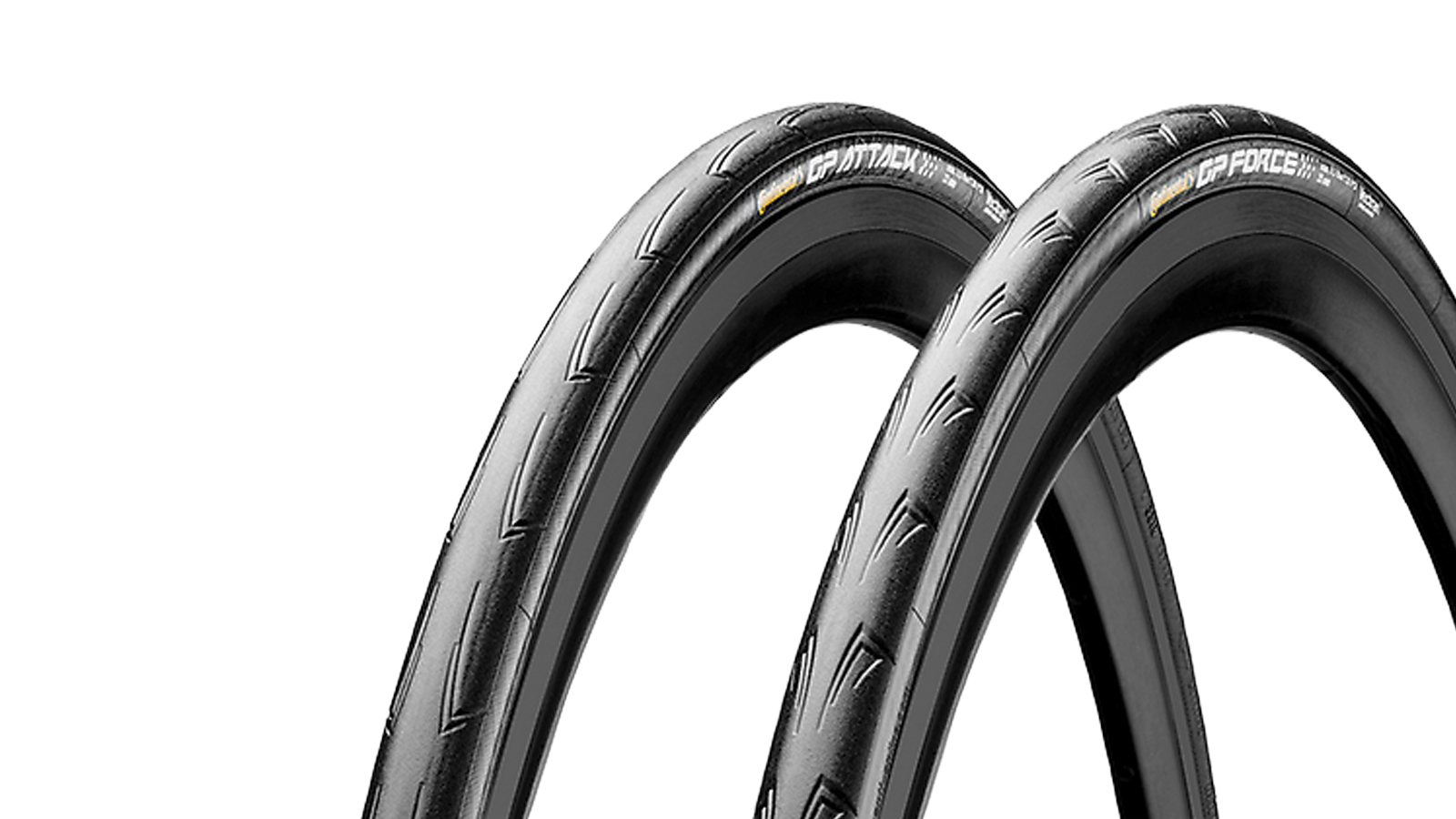
Grand Prix Attack and Force
Specifications
Reasons to buy
Reasons to avoid
Continental’s Grand Prix derived double act teams the lightweight, 23mm wide Attack upfront with the Vectran protected, 25mm Force on the rear. Both tyres use BlackChili compound for speed and grip. Having the narrower tyre up front gives a slimmer wind-cheating profile where it matters most and then you get more volume and protection on the rear where the loads and stresses are heavier. It’s also lighter than using two standard Grand Prix tyres in different sizes so the setup suits racers, particularly solo time trial/triathlon specialists.
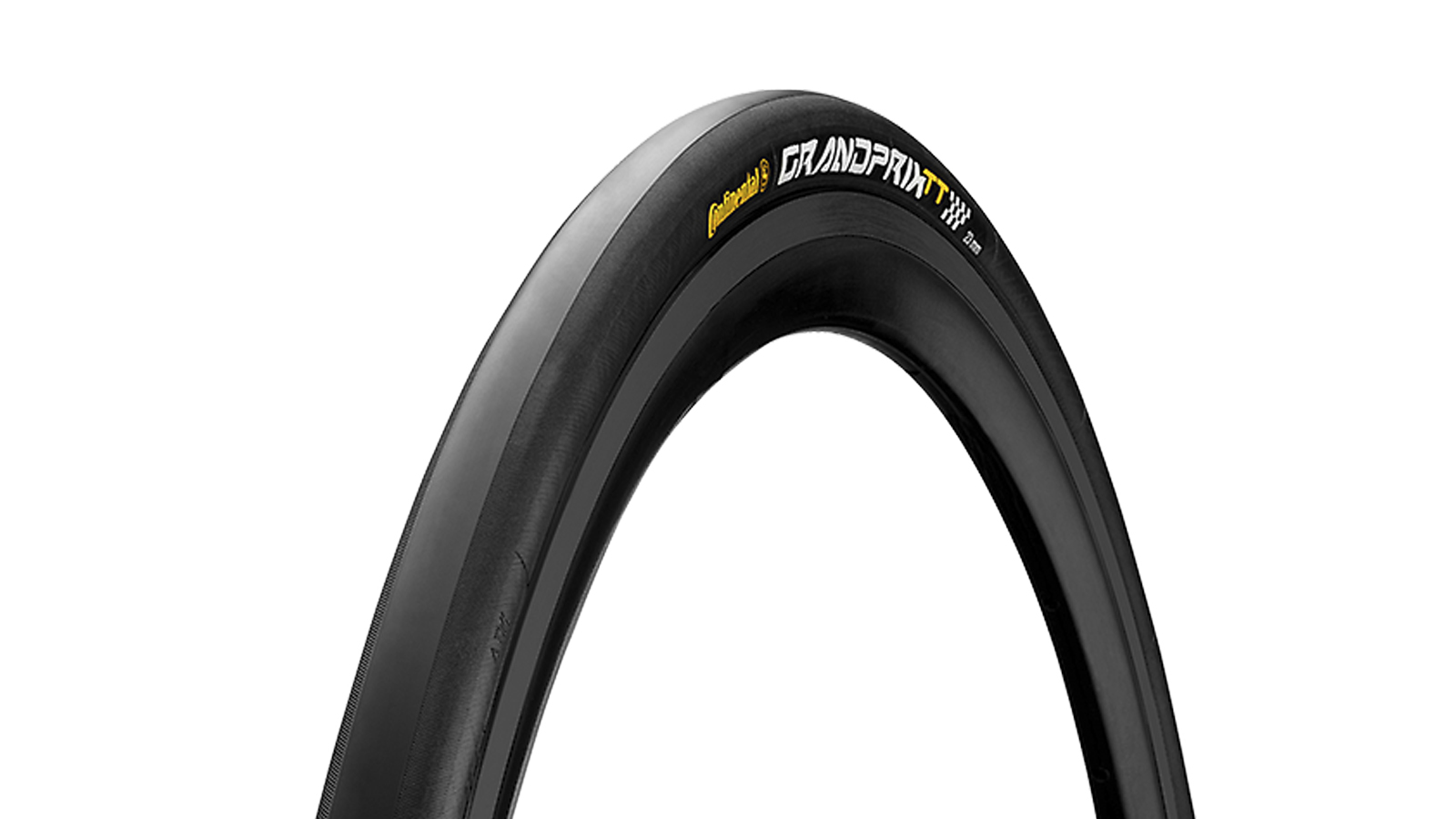
Grand Prix TT
Specifications
Reasons to buy
Reasons to avoid
The TT version of the Grand Prix was the first non-tubular tyre to win a World Championship time trial. It uses a mostly slick tread with slightly roughened shoulders for a bit more grip. The tread depth is also minimised to increase flexibility and minimise wasted rolling energy. It also brings both sizes of tyre under 200g for instant acceleration and floated climbing feel. You still get a Vectran protective layer to help get to the end of the race although the minimal tread depth means they’ll soon wear out in regular use. It’s worth noting that the independent Bicycle Rolling Resistance lab measured them as faster than the Supersonic’s on their roller rig, but slower than the tubeless GP5000.
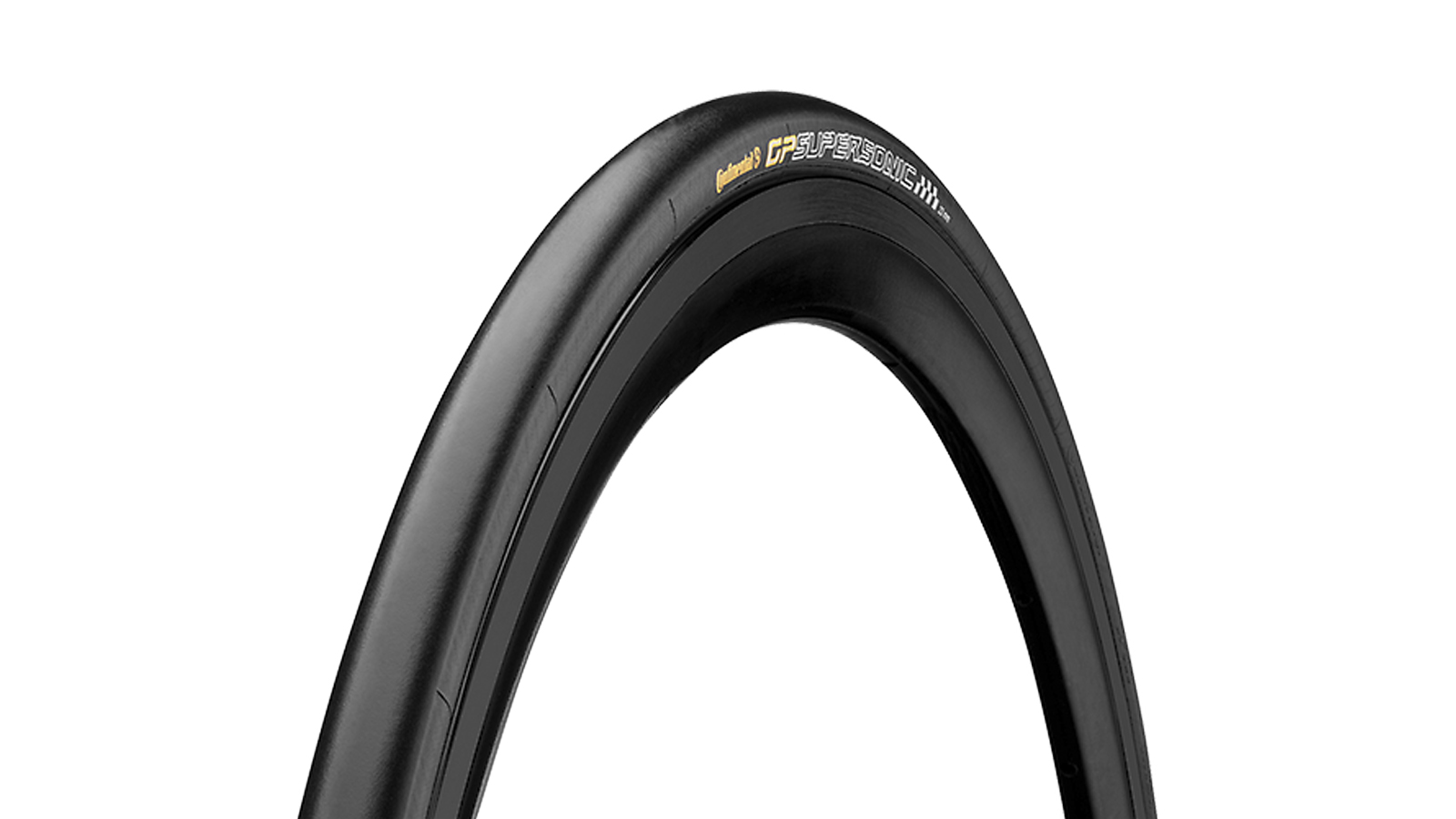
Grand Prix Supersonic
Specifications
Reasons to buy
Reasons to avoid
The Supersonic version of the Grand Prix is a proper commitment to ultra-light speed over survival. This minimal weight tyre is only available in 20mm or 23mm with no puncture protection layer and only the thinnest skim of slick BlackChili rubber over the carcass. That makes it very vulnerable to sharps and cuts on the road and it’ll wear out super quick though. With a pressure rating up to 170psi they’re a great track clincher if you don’t want to use glue on tubular tyres. Their minimal weight also makes them a great hill climb competition tyre where distances are super short and a puncture means a DNF anyway. If you’re not worried about weight though the GP5000 tested faster with the independent Bicycle Rolling Resistance lab in both standard and tubeless formats.
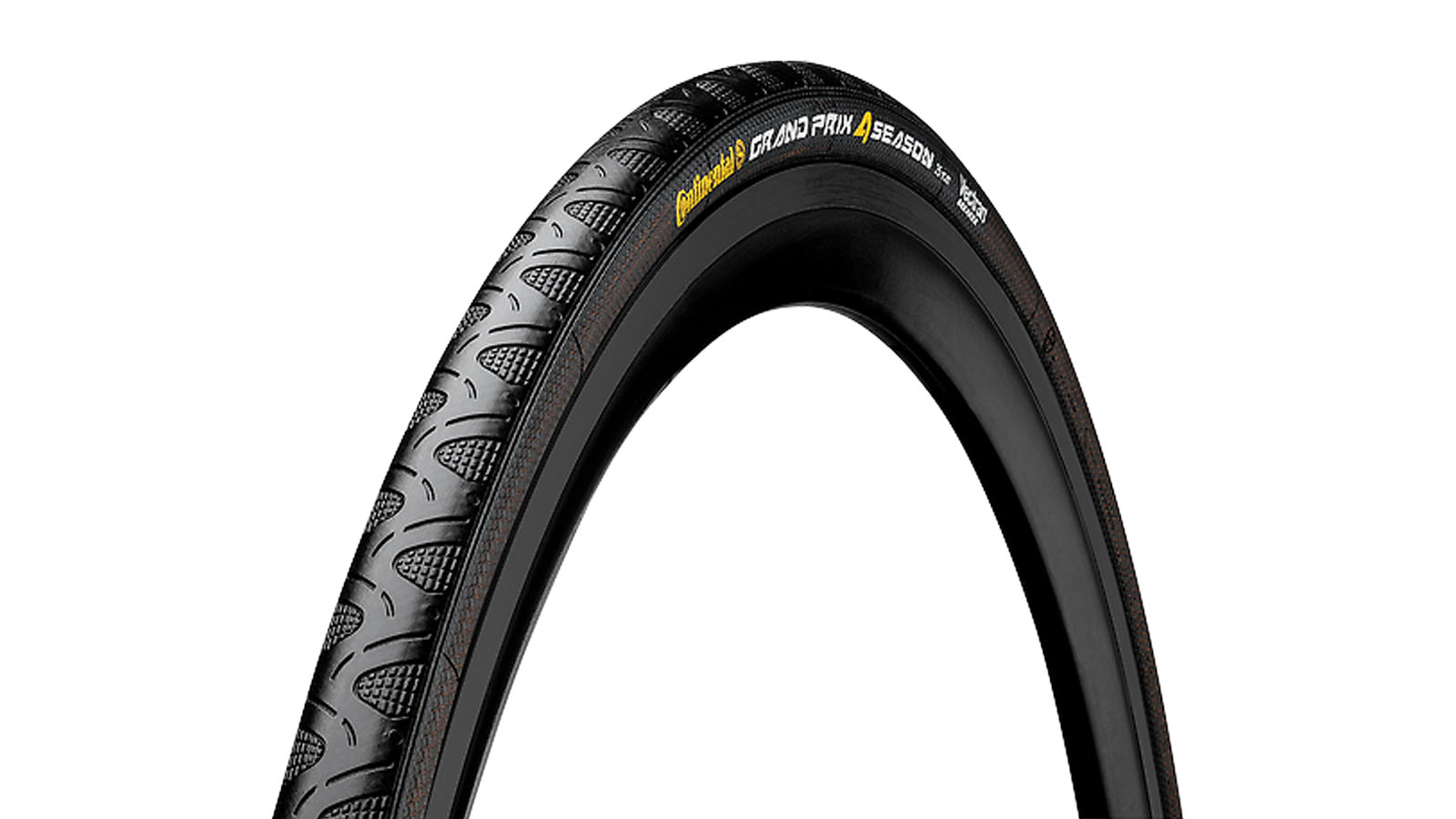
Grand Prix 4 Season
Specifications
Reasons to buy
Reasons to avoid
Another proven classic from Continental. The 4 season gets a double layer of Vectran puncture protection and a DuraSkin carcass wrap to minimise the chance of you being left fixing a puncture in lousy weather. While it doesn’t get BlackChili rubber the ‘Max Grip Silica’ tread compound is designed specifically for cold and wet conditions grip. There’s more tread patterning than a standard Grand Prix, too. Despite the extra armour it only weighs around 35-40g more than a normal GP4000s II. They roll okay and feel definitely isn’t as wooden as a lot of winterised tyres. It also comes in larger sizes to plump up the pneumatic float. There’s no tubeless version yet though.
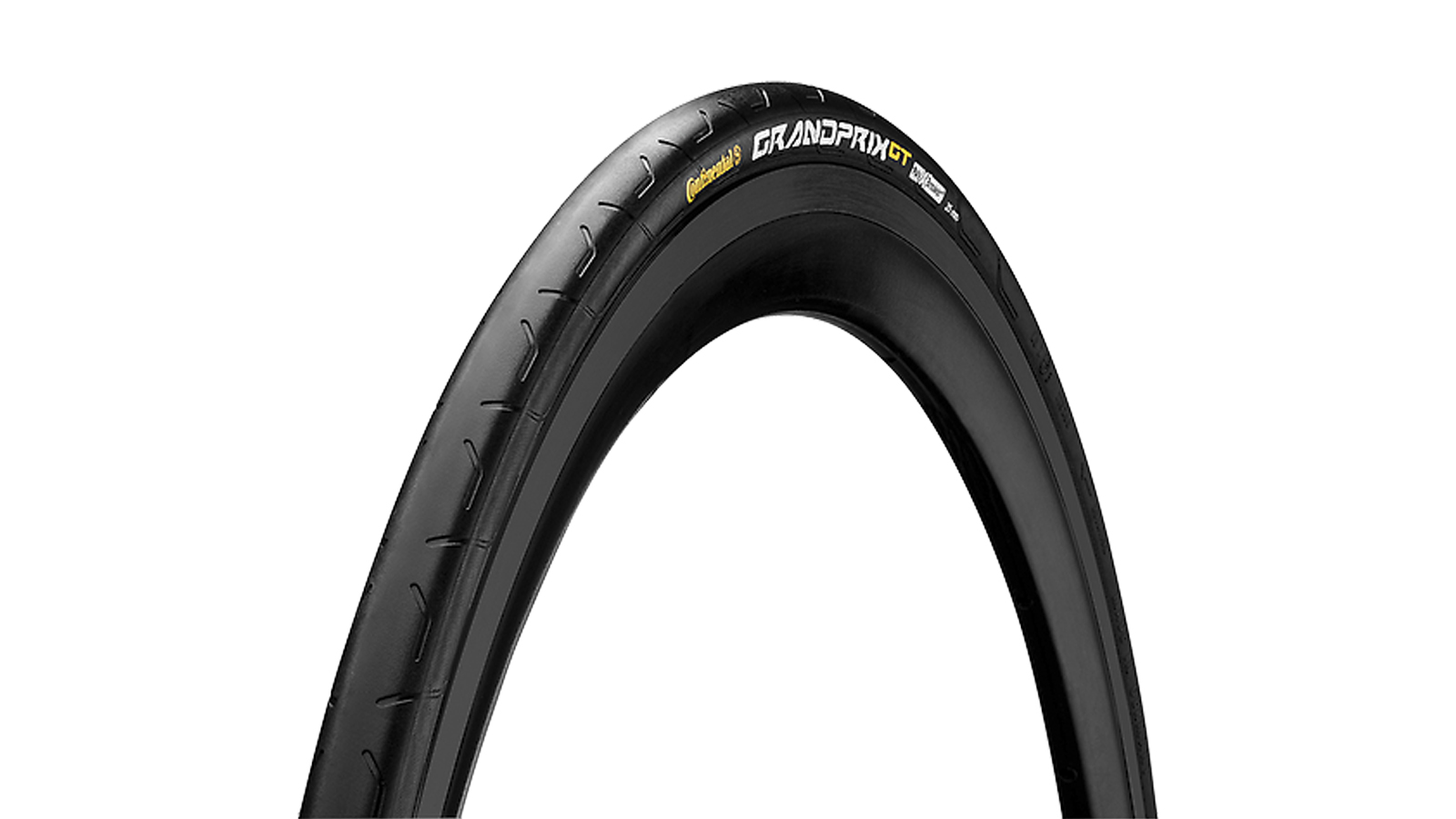
Grand Prix GT
Specifications
Reasons to buy
Reasons to avoid
It’s not often a global tyre brand makes a model specifically for a single country, but the Grand Prix Grand Tour is targeted directly at the UK sportive scene. The fact it’s based on a 50% thicker Hardshell casing with an extra wide PolyX Breaker puncture layer for maximum toughness says something about the roads of Britain. It’s still a relatively light tyre (250g for a 25mm) though and the mostly slick BlackChili compound tread makes it swift rolling yet sticky in corners so you’re not just guaranteed to finish your long distance ride, you’ll finish it pretty fast too. Sizing is limited in 700c but there’s also a 26x1in version for people using old mountain bikes for commuting. It’s also really good value considering what a tough tyre it is and it’s not too wooden either.
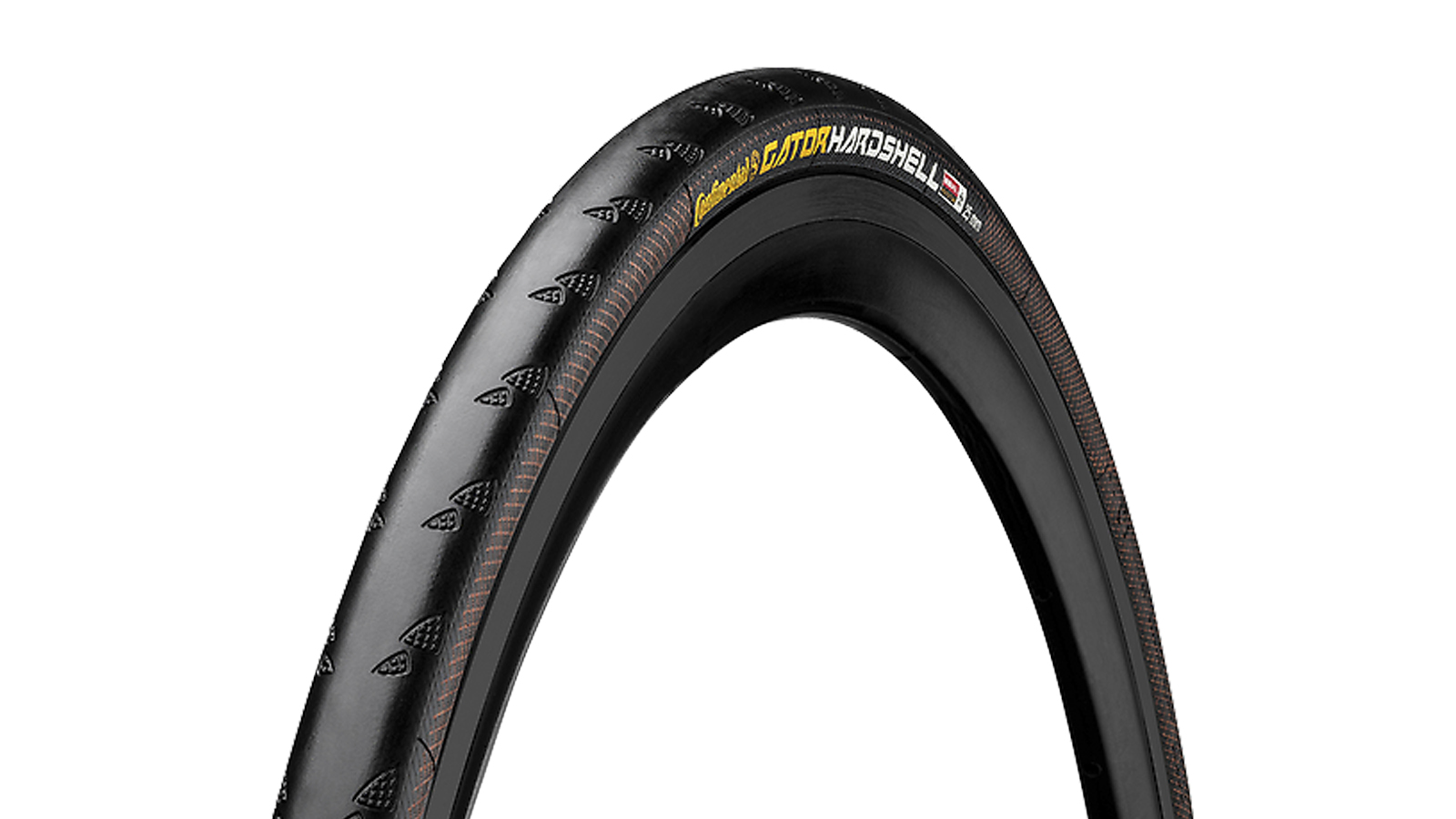
Gator Hardshell
Specifications
Reasons to buy
Reasons to avoid
Noticing that a lot of commuters were using Gatorskin tyres but still wanting something tougher, Continental added even more protection to create the Gator Hardshell. The triple layer Hardshell carcass is obviously the base, but this then gets a wide shoulder to shoulder PolyX Breaker over the top. A DuraSkin grid is then added to the external face of the sidewall to stop slash and scuff damage. That makes for a serious bombproof tyre but also means a more wooden ride and relatively hefty weight (350g for the 32mm) compared to the GT. It’s definitely more puncture proof than the Gatorskin without rolling much slower.
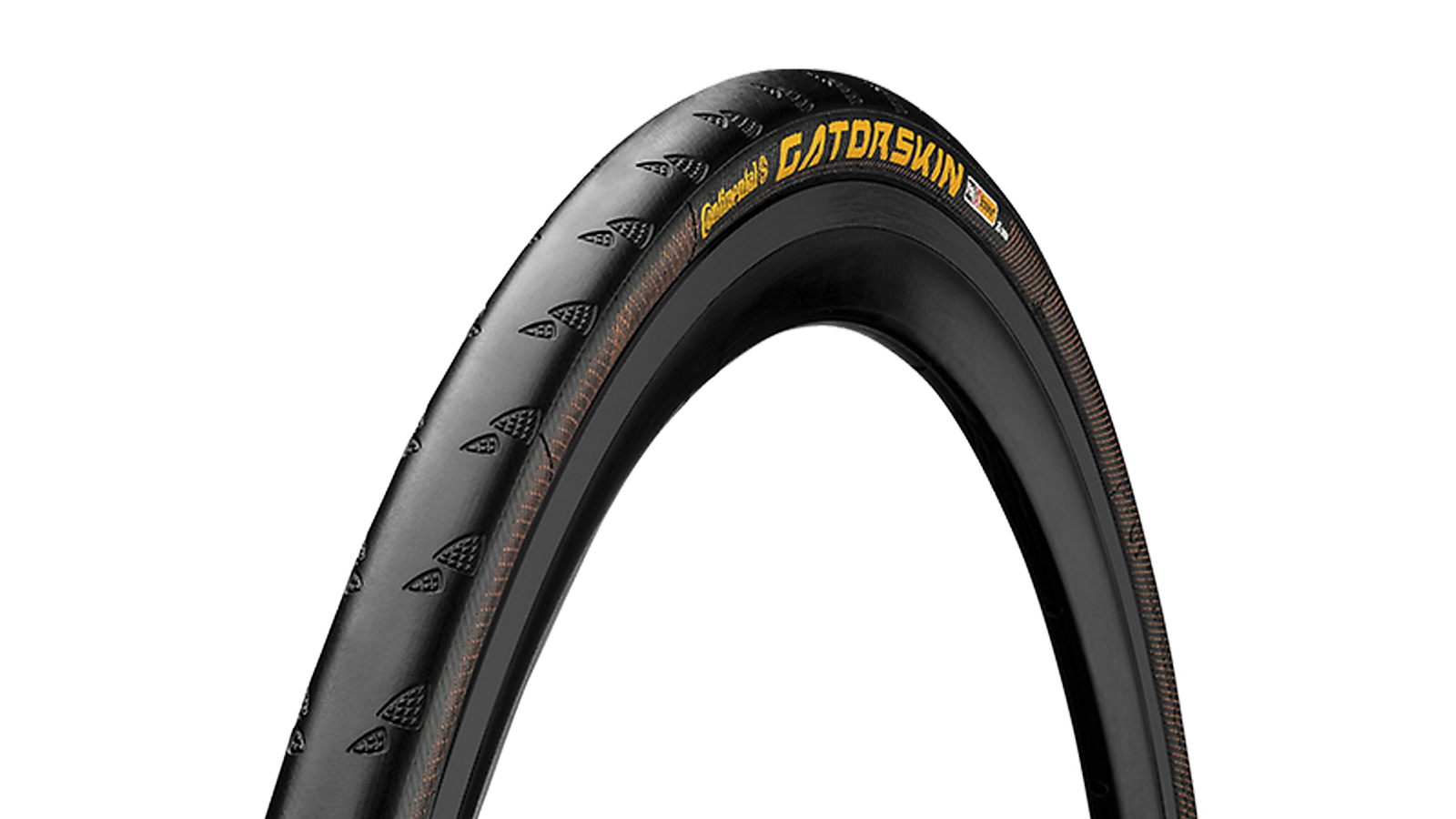
Gatorskin
Specifications
Reasons to buy
Reasons to avoid
Gatorskin has got a legendary reputation for puncture protection, thanks to a full wrap of DuraSkin anti-cut mesh. The German-made natural rubber tread is formulated for predictable wet and cold grip. That’s made it a favourite winter tyre for thousands of riders. Because it’s an old tyre, it’s paid all its development dues and so can be sold at a really good price. The technology is dated though and you can get significantly more protection and a similar acceptable rolling speed from the Gator Hardshell.
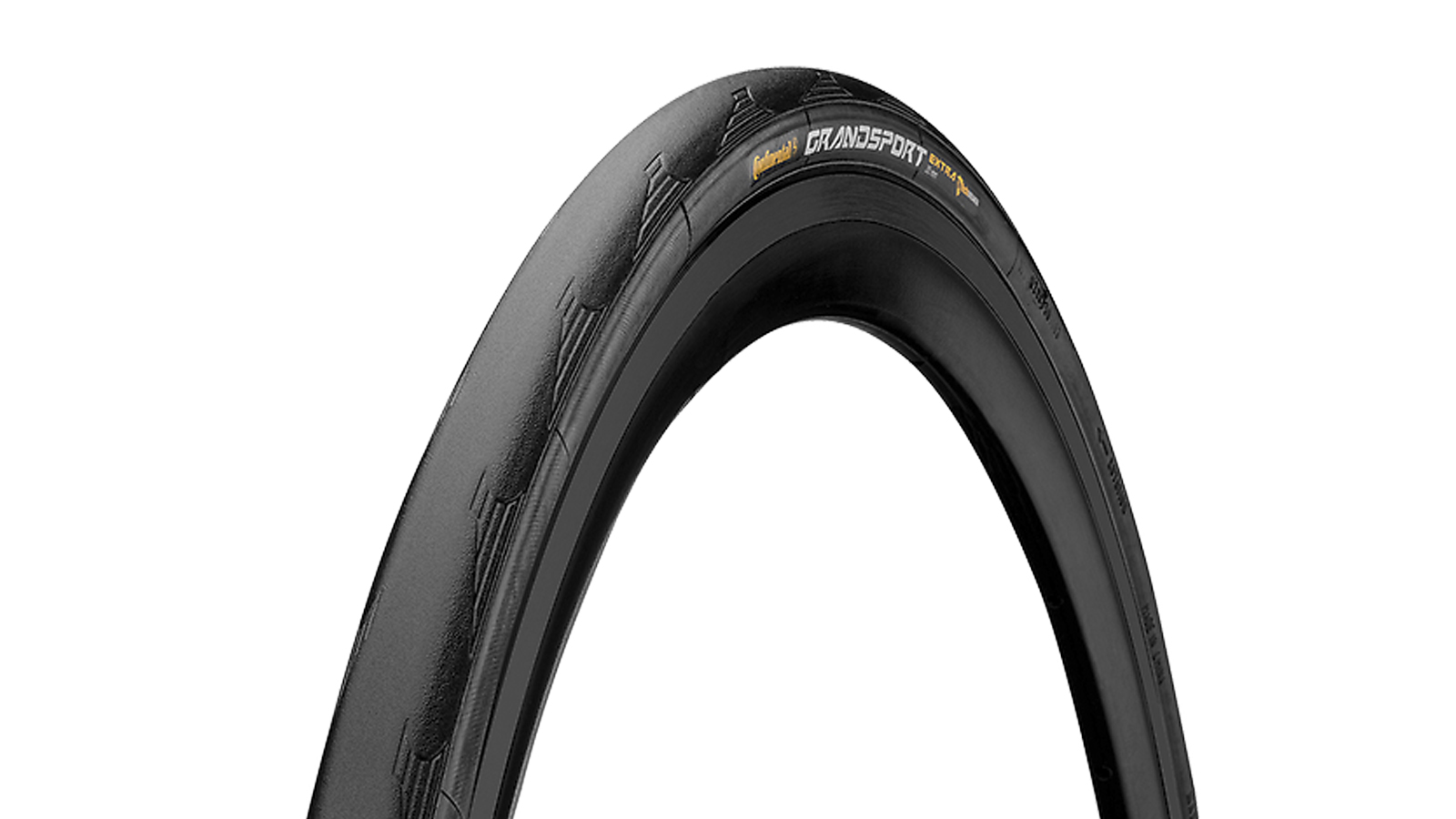
Grand Sport Extra
Specifications
Reasons to buy
Reasons to avoid
There are two tyres in the Grand Sport Performance range but given the choice we’d definitely pay the extra for the Plus over the Race. That’s because the Plus adds an extra layer of NyTech Breaker under the PureGrip tread which is barely noticeable in weight or ride feel but significant in making the budget nylon protection properly useful. Otherwise the PureGrip tread is a lot more trustworthy than previous budget recipes from Continental and both Grand Sport tyres roll well and feel good even on rougher roads.
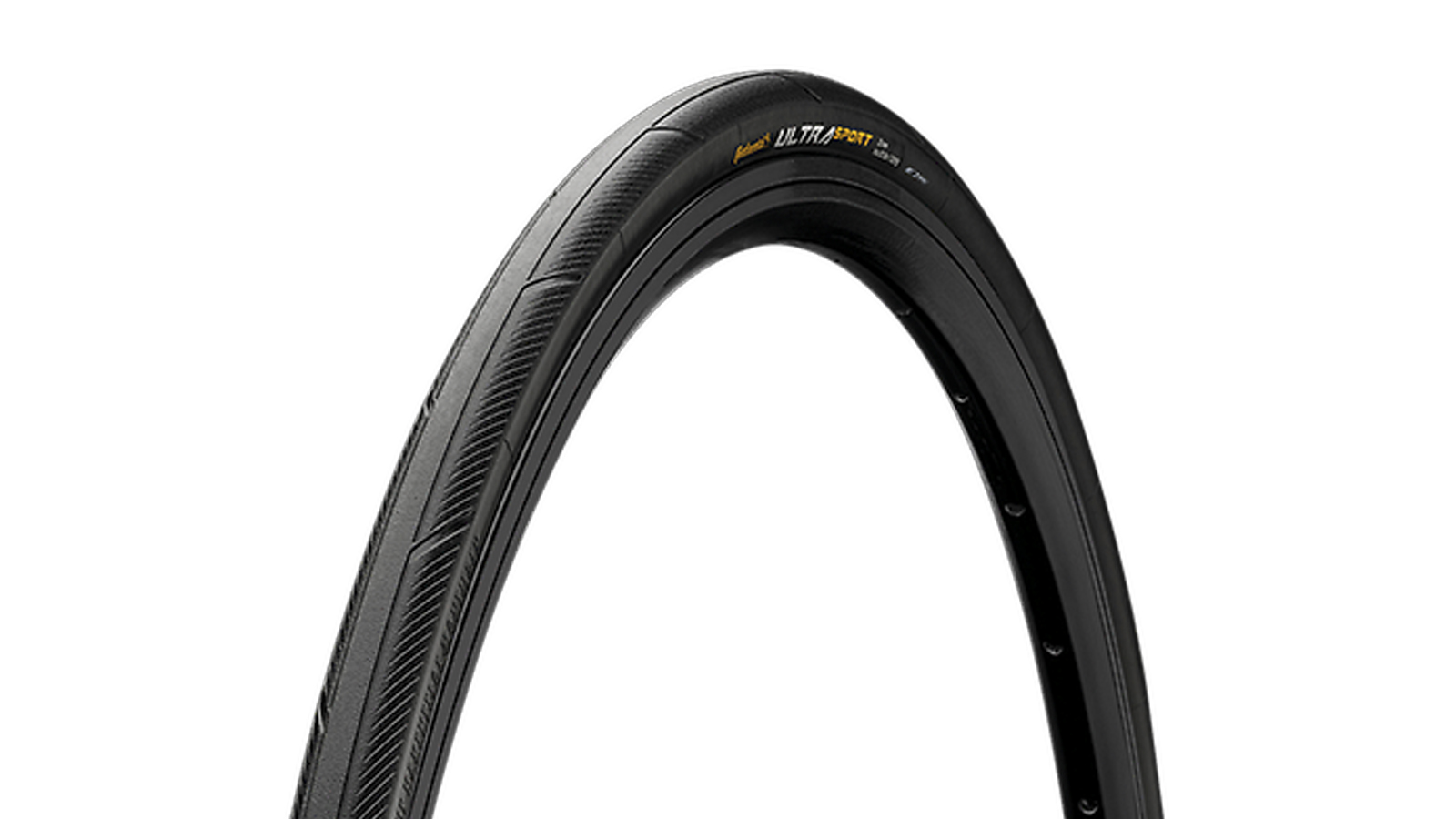
Ultra Sport III
Specifications
Reasons to buy
Reasons to avoid
The cheapest Continental tyre in the Performance range you probably won’t be surprised to learn that the Ultra Sport III is an update on the Ultra Sport II. It’s a very minor refresh too, with only a new tread pattern cut into the PureGrip rubber and an E-25 e-bike rating sticker on the sidewall. While it’s unchanged the well-proven triple-ply 60tpi casing gives a decent ride feel and similar puncture resistance to most expensive race tyres even without a protective ‘breaker’ layer in it. The PureGrip rubber gives much better grip than most basic budget tyres too, but weights are heavy and it’s significantly slower than Conti’s premium tyres. It does cost a third of their price though.
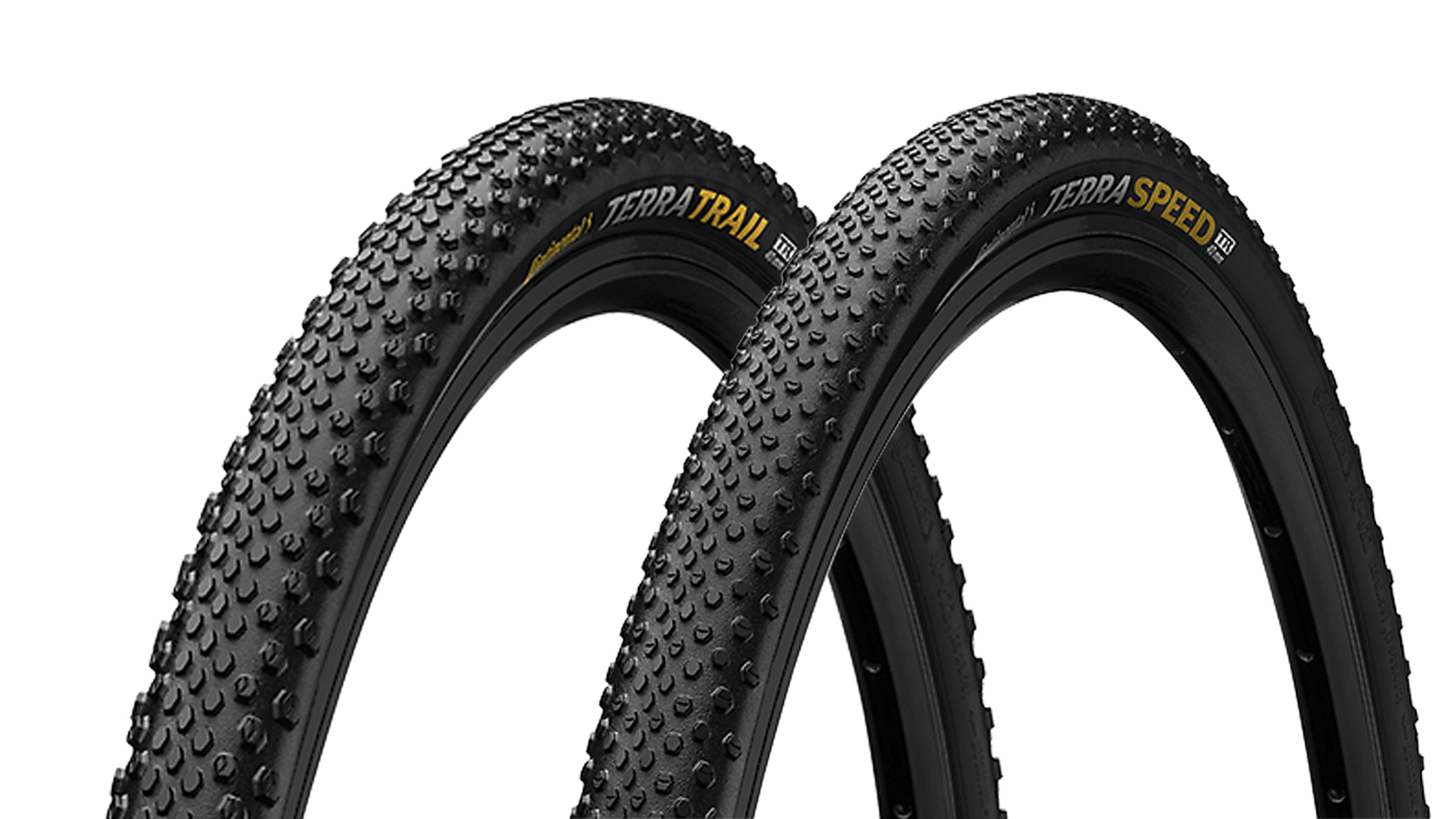
Terra Trail and Terra Speed
Specifications
Reasons to buy
Reasons to avoid
Continental never rushes into things and that’s certainly true of proper gravel tyres. The company has had skinny 700x32-35c versions of its Mountain King, Cross King, Race King and Speed King MTB tyre designs for Cyclo-cross use for years but they weren’t tubeless. The totally new Terra pairing use Continental’s new Tubeless Ready tech for a very easy fit and inflation without inner tubes and they stay stable and secure right down to 30psi. The MTB standard ProTection casing makes them impressively tough in terms of scuffs and cuts while staying very supple and smooth on rougher surfaces.
The BlackChili rubber compound makes the oval tread lugs of the Terra Trail surprisingly grippy even in mud. The more pronounced shoulder lugs mean you can properly attack turns too, rather than tiptoeing around like most gravel tyres. The Terra Speed uses a lower height version of the same tread for seriously fast rolling speed but still stays hooked up in an impressively wide range of conditions if you’ve got reasonable traction control yourself.
Running a matching pair makes the most of their different corners but for intermediate conditions we find they work great as a team, with the Trail up front and the Speed on the back.
The premium compound and tech mean they’re not cheap, but there are Performance versions with Shieldwall carcass protection technology and PureGrip rubber compound coming soon.
- Best gravel tyres: from dusty to dirty, here's our pick of the best tyres for your gravel bike
- Winter road bike tyres: the best high-grip puncture-resistant tyres for your winter bike
Continental road tyres: technology explained
You can trust Cyclingnews
Continental has been making bike tyres for 149 years and it has developed a lot of its own bespoke technology along the way. Its premium BlackChili tyres are still all handmade in the German Korbach HQ, while more affordable Performance grade tyres are made in its own Far Eastern factory. Either way, there’s a lot of Continental tech that needs translating to help you know what to buy to best suit your riding and budget.
BlackChili
A secret mix of polymer, carbon black particles and fillers that’s added to a natural rubber base and adjusted and to create a different compound for the performance targets of each tyre. Continental doesn’t let the recipe out of their home factory in Korbach so it’s reserved for premium tyres.
PureGrip
An activated silica compound evolved from Continental’s older, cheaper tyres. Now offers decent grip and speed with excellent wear life on Performance grade tyres made in Continental’s own Chinese factory.
Active Comfort
A layer of shock absorbing elastomer that sits underneath the tread of the tyre soaking up vibrations from the road for a ‘quieter’ and more efficient ride. It can actually make the tyre feel slower though.
Lazer Grip
The shoulder tread of Continenal’s top-line road tyres is cut into the rubber with lasers rather than being moulded in at the start.
Vectran Breaker
A synthetic sheet made of very high tear resistance liquid crystal polymer fibres that are used to provide lightweight, flexible protection layer under the tread. GP5000, 4000 and others get a single layer while 4 Season and Top Contact tyres get a double layer for extra protection.
DuraSkin
Lightweight, cut resistant polyamide mesh wrapped over the carcass of Gatorskin tyres to protect the body of the tyre from scuffs and slices. Gives the tyres a distinctive brown woven sidewall.
Supersonic
The lightest tyres in the Continental range have minimal tread layer depth and no added protection to keep them as flexible and fast accelerating as possible. You run a much larger risk of flatting though so they’re best suited to win or bust short course or triathlon use.
PolyX Breaker
As the name suggests this puncture protection layer uses a densely cross-woven Polyester fibre normally used in car tyres. It’s tougher and used in wider sheets than Vectran for maximum protection on German handmade Hardshell tyres.
Hardshell
Hardshell tyres are based on a naturally very tough triple-ply 60tpi (threads per inch) carcass that’s 50% thicker than a normal Grand Prix tyre. This is then topped with a PolyX Breaker under the tread and over the shoulders, with DuraSkin over the outer sidewalls for cut and scuff protection.
ProTection
ProTection MTB technology to gravel with a carcass that puts 4 ply under the tread and 3 ply on the sidewalls with an added layer of puncture protection to stop cuts and sharps rupturing the tyre. It gets a ‘flag design’ on the sidewall for rub resistance and it’s now properly, easily Tubeless Ready too.
The latest race content, interviews, features, reviews and expert buying guides, direct to your inbox!
